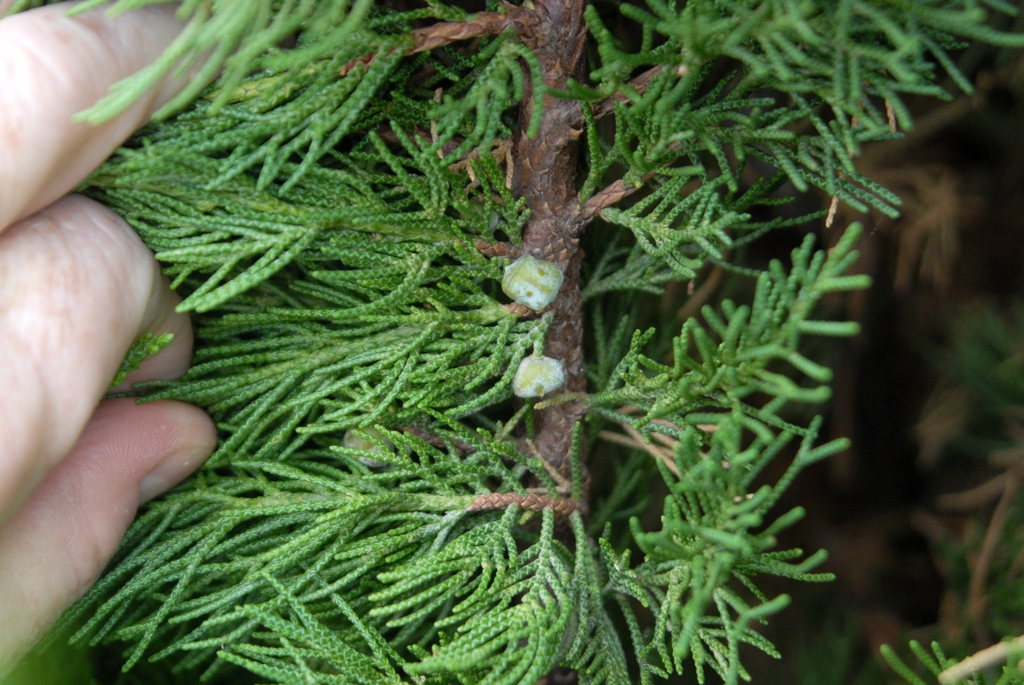
Juniperus chinensis
We all have those spots in the garden that defy our attempts to cultivate them. And that’s where junipers come in.
These evergreen shrubs are the ones that we perpetually reach for to fill arid, windy, salty, polluted, or eroded spots, where deer wander through like they own the place.
We link to vendors to help you find relevant products. If you buy from one of our links, we may earn a commission.
Chinese junipers in particular are a worthy opponent for any windy, alkaline, eroded location. If you want a plant that can elegantly address a privacy situation, it’s excellent for that, too.
They work in containers flanking a driveway or hedges or screens against a windy hillside. There’s quite a lot this classic beauty can do.
Chinese junipers have been in cultivation for centuries, and any plant that captures the gardener’s heart for that long has to have something pretty exceptional going for it.
More details on that and more are coming up in this guide. Here’s what to expect:
It may seem like one juniper species is much like another, but there is a surprising range of differences between these plants.
Chinese junipers are a bit different from their cousins in some important ways. Let’s dig into it!
What Is Chinese Juniper?
As you might guess from the botanical name, Juniperus chinensis hails from China, as well as Mongolia, Taiwan, Korea, Russia, and parts of Japan.
One of the larger junipers, it grows to 60 feet tall and 20 feet wide with a conical growth habit, though specimens can vary widely in their size depending on the growing conditions and cultivar.
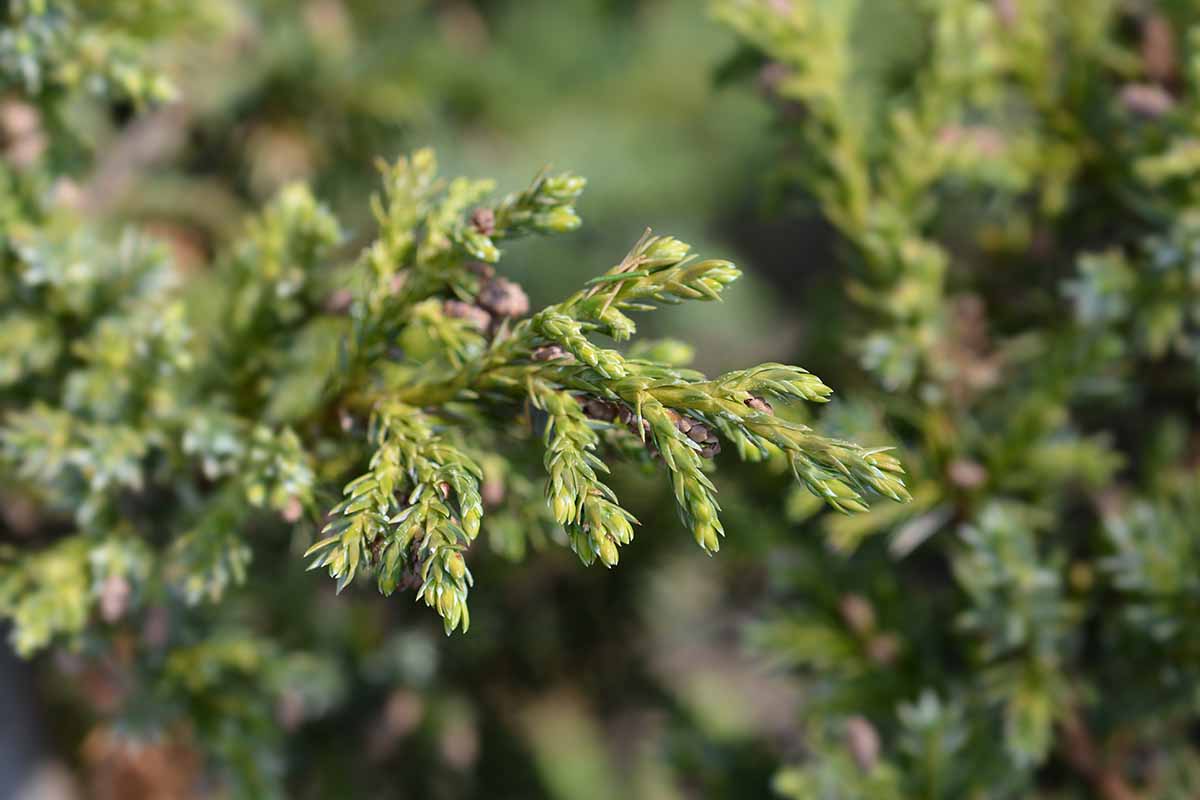
As with many other Juniperus species, the juvenile leaves are different from the mature ones.
Young leaves are needle-like, hard, and sharp. Older leaves are scale-like and soft. Some trees retain their juvenile leaves, particularly in the lower, inner parts of the plant.
The berries, which are actually cones, are dark blue and contain two to four seeds each. They need about 18 months to mature.
Cultivation and History
Chinese junipers are one of the most popular plants for use in creating bonsai and they’ve been used as such for hundreds of years. It’s likely that this was one of the first species used when the art of pun-sai began in China in the 700s.
Some living J. chinensis bonsai specimens are hundreds of years old.
Westerners eventually caught on to the existence of these majestic junipers and Carl Linnaeus first described the plant in 1767.
Today, there are over a hundred named cultivars and they vary in foliage color, size, and shape. There are some that retain their juvenile foliage indefinitely, such as ‘Shoosmith.’
Others stand up to arid or alkaline soil. Some have yellow foliage while others tend to run more purple. There are upright cultivars, and some that are decidedly bushy.
Propagation
As with most junipers, propagating seed isn’t the best option. It takes years and isn’t very reliable.
However, Chinese junipers lend themselves nicely to air layering, as well as the usual modes of taking cuttings and planting nursery starts or saplings that work so well for other species.
From Air Layering
Air layering is a popular method for propagating bonsai trees, but you can do it with standard plants as well.
This process should be done during the spring.
Take a sharp, clean knife and make a slit around the entire circumference of a branch. The branch you choose should be at least the diameter of a pencil. An inch below that first cut, make another slit around the entire circumference.
Don’t cut too deep. You want to cut through the bark and the soft cambium layer underneath but not through the hardwood at the center.
Gently strip or cut away the bark and the soft, green cambium layer between the two cuts you made, using your knife. You want to expose the hardwood at the center of the stem.
Wrap a piece of clear plastic loosely around the wound you made. Secure the bottom with electrical tape, rubber bands, or wire. Fill the plastic with moistened sphagnum moss and secure the top.
Now just keep an eye on the moss and make sure it stays moist. If it starts to dry out, open the top of the plastic and spray the moss.
After a few months, you should see roots forming. Once you do, you can cut away the branch or stem just below the plastic covering. Remove the plastic and the moss, and plant as you would a sapling as described below.
From Cuttings
Taking cuttings is my favorite method for propagating these plants. It’s fast, easy, and reliable. Wait until mid- to late spring and take a cutting from a branch that’s about as thick as a pencil.
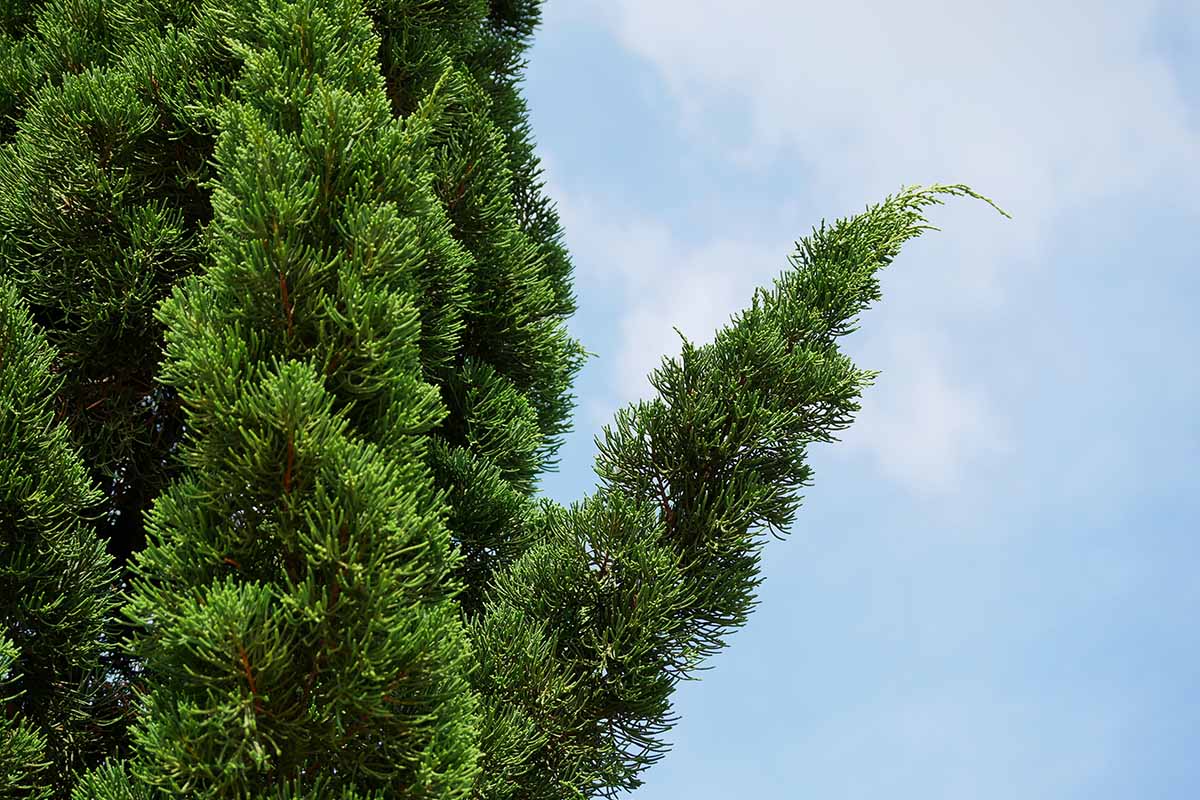
Cut the bottom of each cutting at a 45-degree angle and remove any leaves from the bottom half. Optionally, dip the end in a rooting hormone. Plant each cutting in a six-inch container filled with seed-starting medium.
Place containers in bright, indirect light and keep the soil moist. You don’t want it to ever be sopping wet or bone dry.
It takes a few months, but roots will form. At that point, you’re ready to transplant.
Take the cutting and harden it off outdoors for a few weeks by increasing the amount of exposure gradually before leaving it outside full-time. In the spring, remove the rooted cutting from its container and plant it in the ground.
For a more detailed layout of this process, head to our comprehensive juniper growing guide.
Transplanting Nursery Starts and Saplings
As soon as you can work the soil in the spring, you can put purchased saplings in the ground. Fall is also an excellent time to transplant.
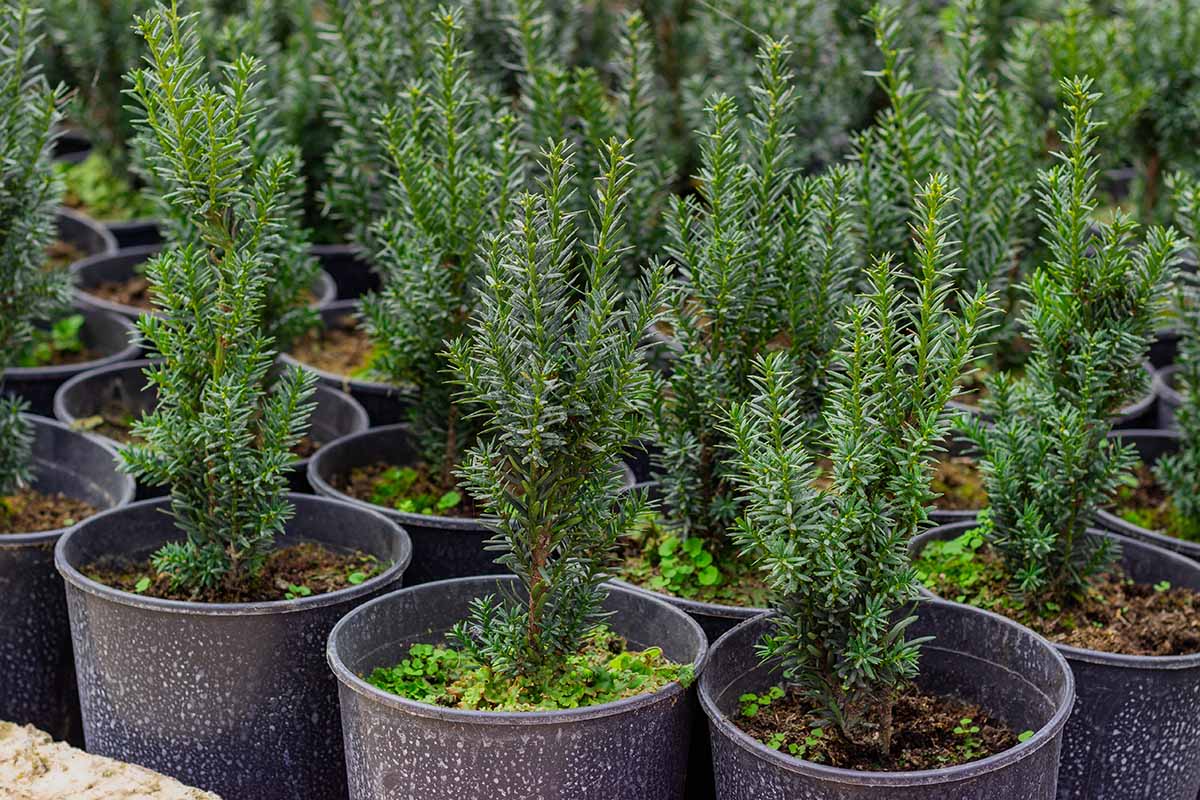
If you don’t have perfect soil naturally, you’re going to want to amend your soil before planting. Just work in a bunch of well-rotted compost to improve clay or sandy soil and you should be good to go.
Dig a hole twice as wide and the same depth as the growing container and remove the juniper from its pot. Knock away any loose soil and tease the roots apart.
Place the plant in the hole and fill in around it with soil. Water well to settle the soil and add more soil if needed.
How to Grow
Some junipers are perfectly happy in arid soils, but not this one. It needs moderately moist soil and will tolerate only occasional, brief droughts – and only once it’s established.
Gardeners in dry climates will need to irrigate regularly, and providing supplemental irrigation as needed is recommended in all climates during the first few years of the plant’s life.
The soil should be allowed to dry out to the first inch and then you need to add water. This translates to somewhere around an inch or two of water per week, but don’t get stuck on the numbers.
Just stick your finger in the soil or use a moisture meter to test it. These are more reliable methods for determining when it’s time to water than following standard measurements or a set timeline.
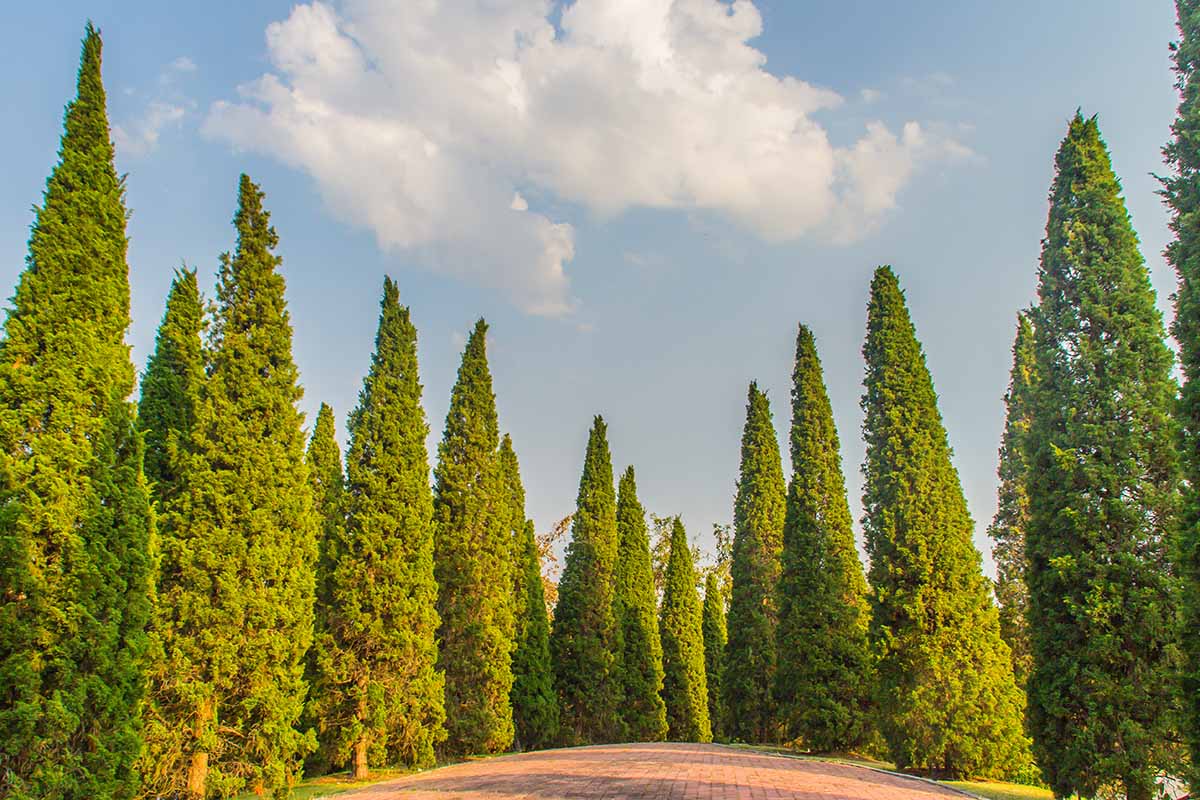
The soil can be somewhat sandy or somewhat clayey, but it must drain fairly quickly. Something loamy with a bit of sand would be ideal. These plants can tolerate very alkaline soil, but a pH between 5.0 and 8.0 is best.
Keep an eye on the amount of sun your plant receives. As trees mature and landscapes change, shade cover changes as well. Plants that were once in full sun may now be struggling in partial shade without you realizing it even happened.
Chinese junipers need six or more hours of sun per day. With less sun you’ll see slower, leggier growth, and more pests and diseases.
Don’t worry about fertilizing unless you’re growing this plant in a container. Containers tend to leach nutrients more quickly than the ground so they need replenishing more often.
Any mild, all-purpose or tree-specific fertilizer will do. Add it in the spring and again in late summer following the manufacturer’s directions for container-grown trees.
Down to Earth makes a nice tree and shrub option that works for both in-ground and container plants, and it comes in a compostable box.
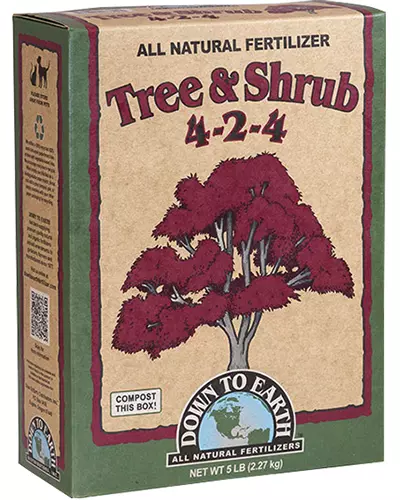
Down to Earth Tree and Shrub Fertilizer
Pick up five or 25 pounds of Down to Earth Tree & Shrub All Natural Fertilizer (4-2-4 NPK) at Arbico Organics.
Growing Tips
- Plant in full sun.
- Water when the top inch of soil dries out.
- Feed container plants with a mild fertilizer.
Pruning and Maintenance
You don’t have to do much once you have your Chinese junipers in the ground. They don’t require any regular pruning. Just remove dead or diseased limbs when you spot them.
If your juniper becomes overgrown, you can prune it back into shape following the recommendations in our guide.

An inch or so of well-rotted compost applied as a mulch around the root zone will be welcome and can add any nutrients that the plant needs.
Add this mulch to in-ground plantings in the fall to give the roots a little protection for the coming winter.
Mulch isn’t necessary, but it can make your plants a bit happier, helping to moderate temperatures and maintain moisture. If using mulch, be sure to apply it away from the crown, to avoid rot.
Cultivars to Select
There are dozens of Chinese juniper cultivars and a good number of them are fantastic. Visit your local nurseries to see what’s available in your area. Here are a few standouts:
Blue Point
‘Blue Point’ signals the way with its arrow-like growth habit and blue-green foliage. It needs no maintenance to retain its tidy pyramid form but it can also be trimmed into a striking topiary.
It’s adaptable, stays a manageable 12 feet tall, and takes well to shaping into topiary if that’s your thing.

‘Blue Point’
If this tree is calling your name, pick up a gallon-size container or a one- to two-foot tree at Fast Growing Trees.
Gold Star
This shrub is a superstar with its bluish-green foliage with bright green tips. The leaves are yellow when they first emerge as new growth, adding even more striking color to the display.
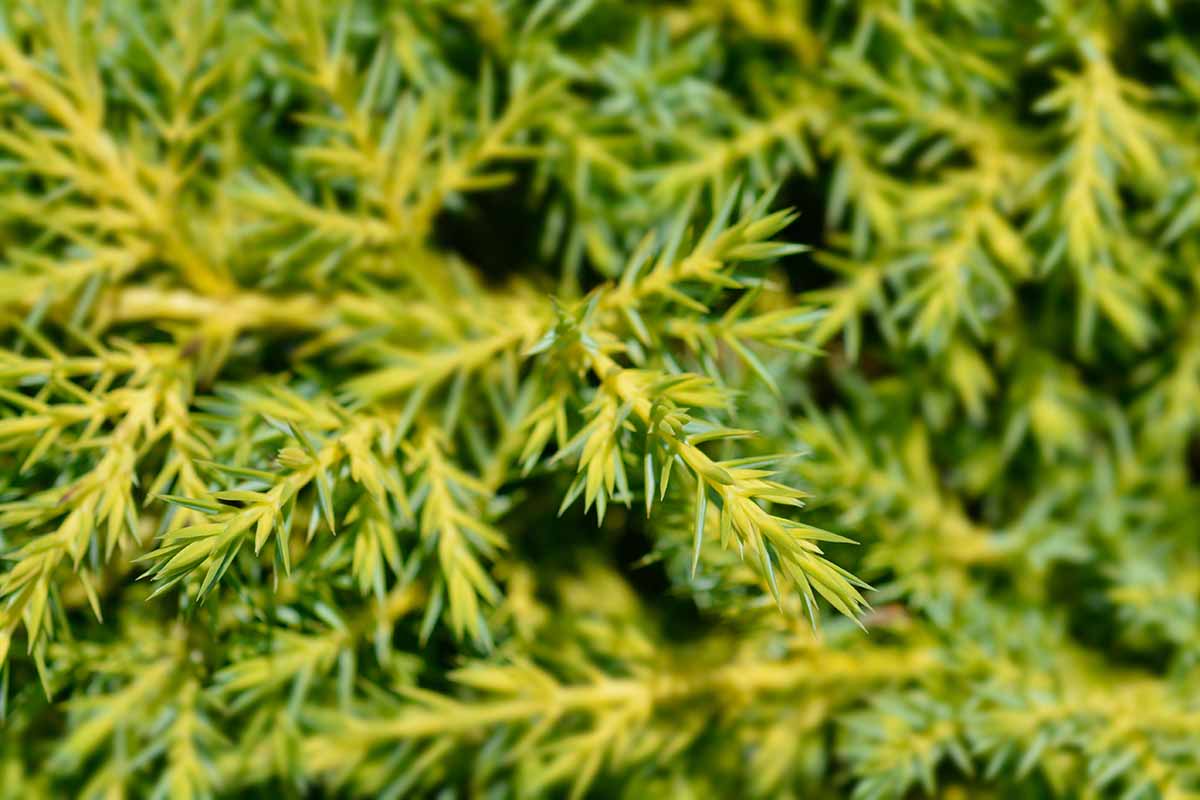
‘Gold Star’ has an attractive, layered growth habit that extends about five feet wide and three feet tall. More than any other plant on this list, it’s resistant to root rot.
Hollywood
You see this beauty all over Los Angeles and it’s easy to understand why it has become so popular. The naturally twisting, spiraling branches covered in deep green needles on a shrub with an upright growth habit instantly catch the eye.
‘Hollywood’ is ideal for use in Japanese gardens or as a focal point specimen in the center of a garden.
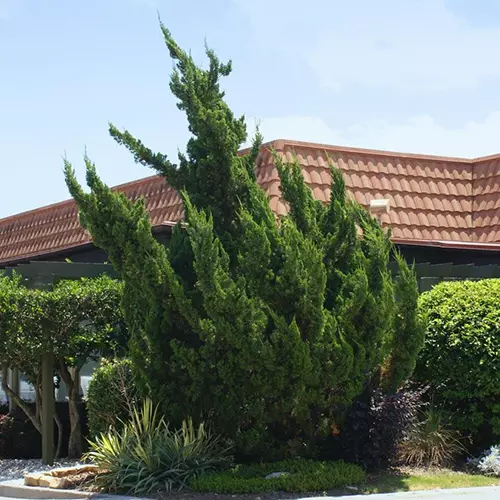
‘Hollywood’
This classic is available at Fast Growing Trees in three- to four- and four- to five-foot-tall plants.
Parson’s
Parson’s juniper (J. chinensis ‘Parsonii’) is a dwarf, creeping type that grows to be six feet wide and three feet tall.
It’s extraordinarily heat-, salt-, and drought-tolerant. The aromatic foliage is dense, soft, and beautiful.
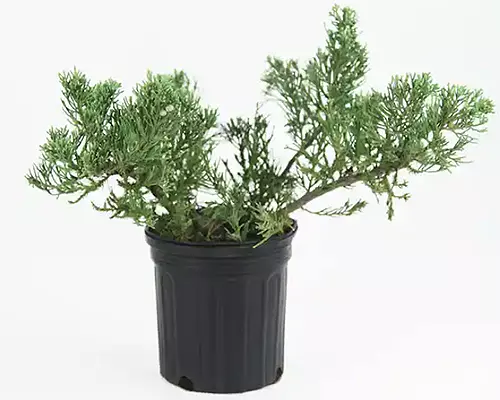
‘Parsonii’
Have a tough spot to fill? This plant fits the bill. Head to Home Depot to bring one home in a 2.25-gallon container.
Sargent
Some kids are as different from their parents as can be, and J. chinensis ‘Sargentii’ is that type of offspring.
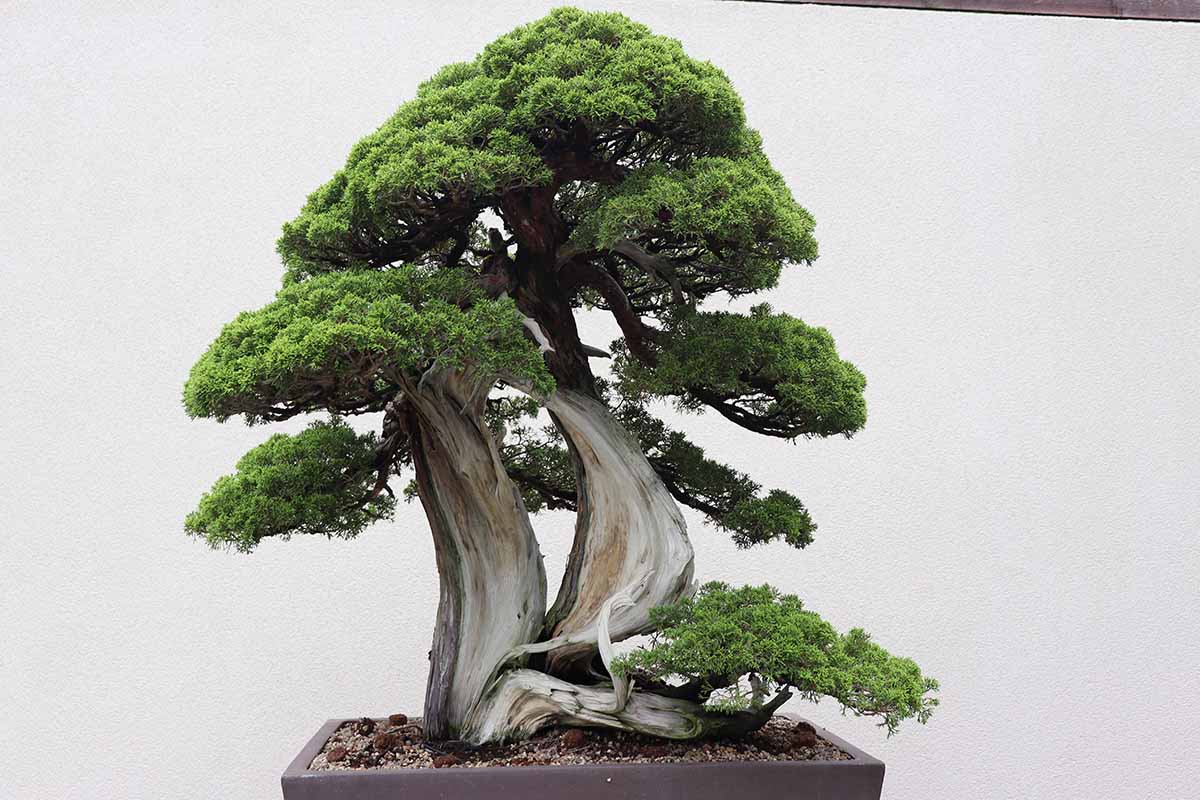
While most Chinese junipers are taller than they are wide, with a columnar or pyramidal shape, this plant is far wider than it is tall. It grows nine feet wide and just two or three feet in height.

‘Sargentii’
Snag a 2.25-gallon pot at Home Depot.
Shimpaku
With a pleasant vase-like, bushy shape, ‘Shimpaku’ grows to about three feet tall and five feet wide with gray-green needles.

Its peeling, gray bark provides an interesting contrast to the needles and makes it a popular bonsai option, as it has been ever since it was collected in Japan in the 1850s.
Spartan
Chances are you’ve seen ‘Spartan’ out there before, in formal gardens and more casual landscapes alike. It’s one of the most popular upright junipers in the US for about a million good reasons.

To name just a few, it has an extremely dense, upright, pyramidal growth habit that looks like you spent hours trimming and shaping it.
It is also tolerant of most soils – except those that drain poorly – as well as salt, drought, and extreme heat. And it resists most diseases.
Plus, ‘Spartan’ grows quickly, and adds deep green elegance to the yard year-round! And these gladiators look especially nice in groups.
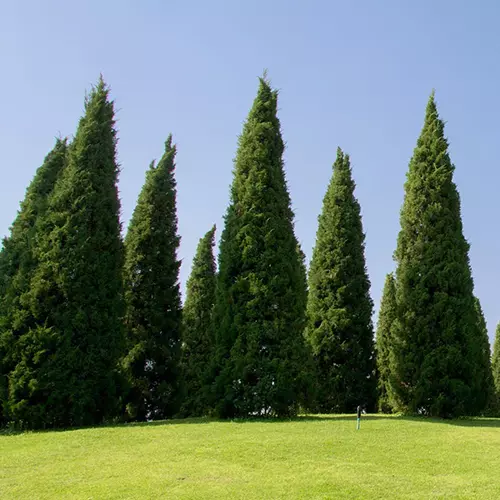
‘Spartan’
To grab one for your own garden – or more! – pop on over to Fast Growing Trees to find a selection of one- to two-, two- to three-, three- to four-, and four- to five-foot-tall trees.
For more detailed information on growing this perennial favorite, our comprehensive guide is coming soon.
Managing Pests and Disease
Part of what makes junipers so lovely is that they aren’t prone to many health problems. Most pests and pathogens leave them alone. However, there are a few things that you’ll need to be aware of:
Pests
There are just two common pests that you might see, though they usually become a real problem only for stressed plants.
Spider Mites
Spruce spider mites (Oligonychus ununguis) are tiny spider relatives that use their mouthparts to suck the sap out of the plants. You probably won’t spot the pests themselves because they’re extremely small. Look out for the symptoms they cause instead.
Yellow spots and browning, dying leaves are the most common symptoms, and you can also tell that mites are present if you see the fine webbing they leave behind. Keep an extra good eye out during the cool weather of spring and fall.
The presence of spider mites often indicates overuse of pesticides or a lack of biodiversity in the garden to draw in natural predators like lacewings and ladybugs. Unchecked, a heavy infestation can destroy a juniper in just a few years.
Fortunately, control is easy. First, trim off any impacted leaves. Spray the stems and leaves with a strong blast of water. Do this every few days in the morning so the plant has time to dry off before nightfall. You should also trim off any dead bits.
You’ll need to continue doing this as long as the webbing is present and symptoms persist.
Learn more about spider mites in our guide.
Scale
Juniper scale (Carulaspis juniperi) is another common pest.
The presence of scale is similar to mite infestation in that it indicates a bigger problem in your garden. A heavy infestation can also destroy a juniper in just a few years.
The bugs themselves look like little lumps and bumps all over the stems. If you scrape them, they’ll come off.
Effective treatment may take up to a year. Grab some horticultural oil and spray the plant thoroughly in the late fall, again in mid-winter, and again in the early spring to smother the adults and developing juveniles.
Horticultural oil is a garden kit must-have.
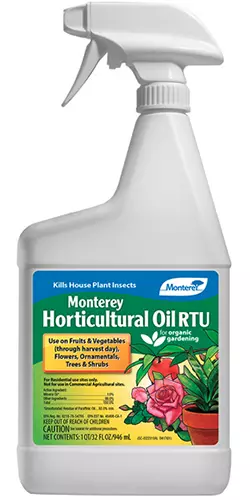
Monterey Horticultural Oil
Grab a quart-size Monterey brand ready-to-use or ready-to-spray bottle, or pint-, quart-, or gallon-size containers of concentrate, at Arbico Organics.
Our guide to scale provides further information.
Disease
As long as you make an effort to keep your plants healthy, it’s unlikely that these diseases will create major issues. Cedar apple rust is fairly common, while blight is less so.
Cedar Apple Rust
All junipers are susceptible to cedar apple rust, caused by the fungus Gymnosporangium juniperi-virginianae.
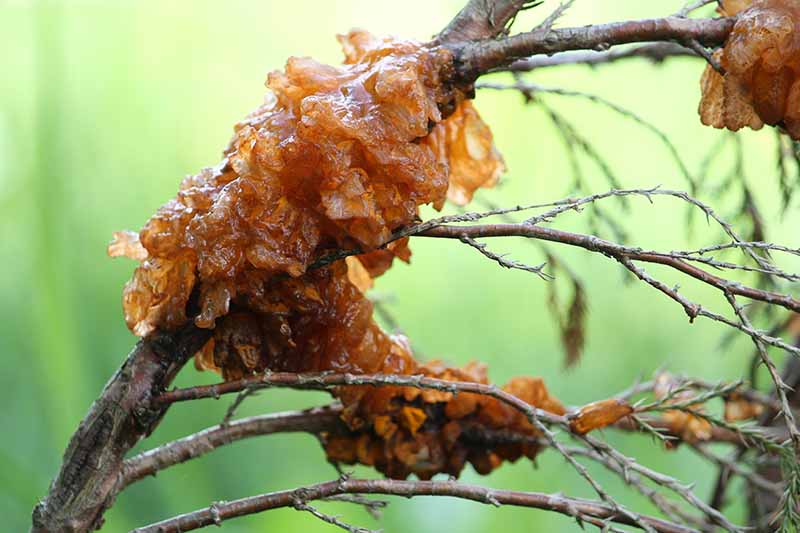
While this disease doesn’t necessarily damage trees, it causes unsightly growths and can impact your apple harvest if you are growing apple trees as well.
To learn more about this disease and how to address it, check out our guide.
Cercospora Blight
Cercospora blight is caused by the fungus Cercospora sequoiae var. juniperi, At initial onset, the older, inside, lower leaves will turn brown. As the disease progresses, it spreads to the upper, outer leaves.
Prune infected branches off as soon as you see them. If you catch the disease early enough, that should be all you need to do. If you catch it late or if it continues to progress and spread, grab some copper fungicide.
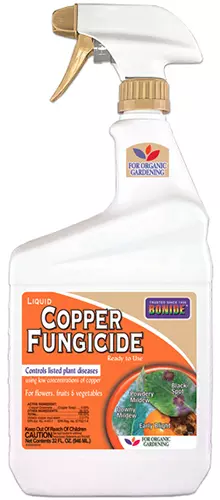
Bonide Liquid Copper Fungicide
It’s available at Arbico Organics in 32-ounce ready-to-use bottles, 16- or 32-ounce hose end bottles, or 16-ounce concentrate.
Spray the plant once every two weeks for at least two months, taking care to get the tops and bottoms of the branches. You don’t want to over-treat, but you also want to be sure you kill all of the pathogens.
Best Uses
Whether you use them to create bonsai, as a screen or hedge, or as specimen plantings in the garden, Chinese junipers are versatile.
The smaller cultivars even make lovely container plants and can be trimmed into topiary.
They’re ideal for anywhere you need an evergreen for color and texture!
Quick Reference Growing Guide
| Plant Type: | Evergreen tree | Flower/Foliage Color: | Yellow to bronze (inconspicuous)/yellow, gold, green, blue, purple; blue cones |
| Native to: | China, Japan, Korea, Mongolia, Russia, Taiwan | Tolerance: | Alkaline soil, some drought, heat, salt |
| Hardiness (USDA Zone): | 4-9 | Maintenance: | Low |
| Season: | Evergreen with perpetual berries | Soil Type: | Sandy loam |
| Exposure: | Full sun | Soil pH: | 5.0-8.0 |
| Time to Maturity: | Up to 50 years, depending on cultivar | Soil Drainage: | Well-draining |
| Planting Depth: | Same depth as container (transplants) | Attracts: | Birds |
| Spacing | 2-6 feet, depending on cultivar | Companion Planting: | Cornflower, echinacea, lavender, rosemary, rose, spruce |
| Height: | Up to 60 feet | Avoid Planting With: | Shade-loving plants like begonia or coleus |
| Spread: | Up to 20 feet | Uses: | Bonsai, containers, ground cover, hedge, screen, specimen, topiary |
| Growth Rate: | Slow | Family: | Cupressaceae |
| Water Needs: | Moderate | Genus: | Juniperus |
| Common Pests and Disease: | Spider mites, scale; cedar apple rust, Cercospora blight | Species: | Chinensis |
Chinese Junipers Are a Beloved Classic
Because they’ve been cultivated for so long, Chinese junipers come in a huge range of sizes, shapes, and colors. That’s part of what makes them so special.
Their ability to withstand conditions that would kill off other plants only sweetens the deal.

While I’m partial to turning them into bonsai trees or using them to create a stately entrance to a home or yard, I’m excited to hear how you plan to use yours. Share your plants in the comment section below!
We’ve only just touched the surface of the big, beautiful world of junipers. If you’re eager to learn more, these guides might be useful to you:
© Ask the Experts, LLC. ALL RIGHTS RESERVED. See our TOS for more details. Product photos via Arbico Organics, FastGrowingTrees.com, and Home Depot. Uncredited photos: Shutterstock.
